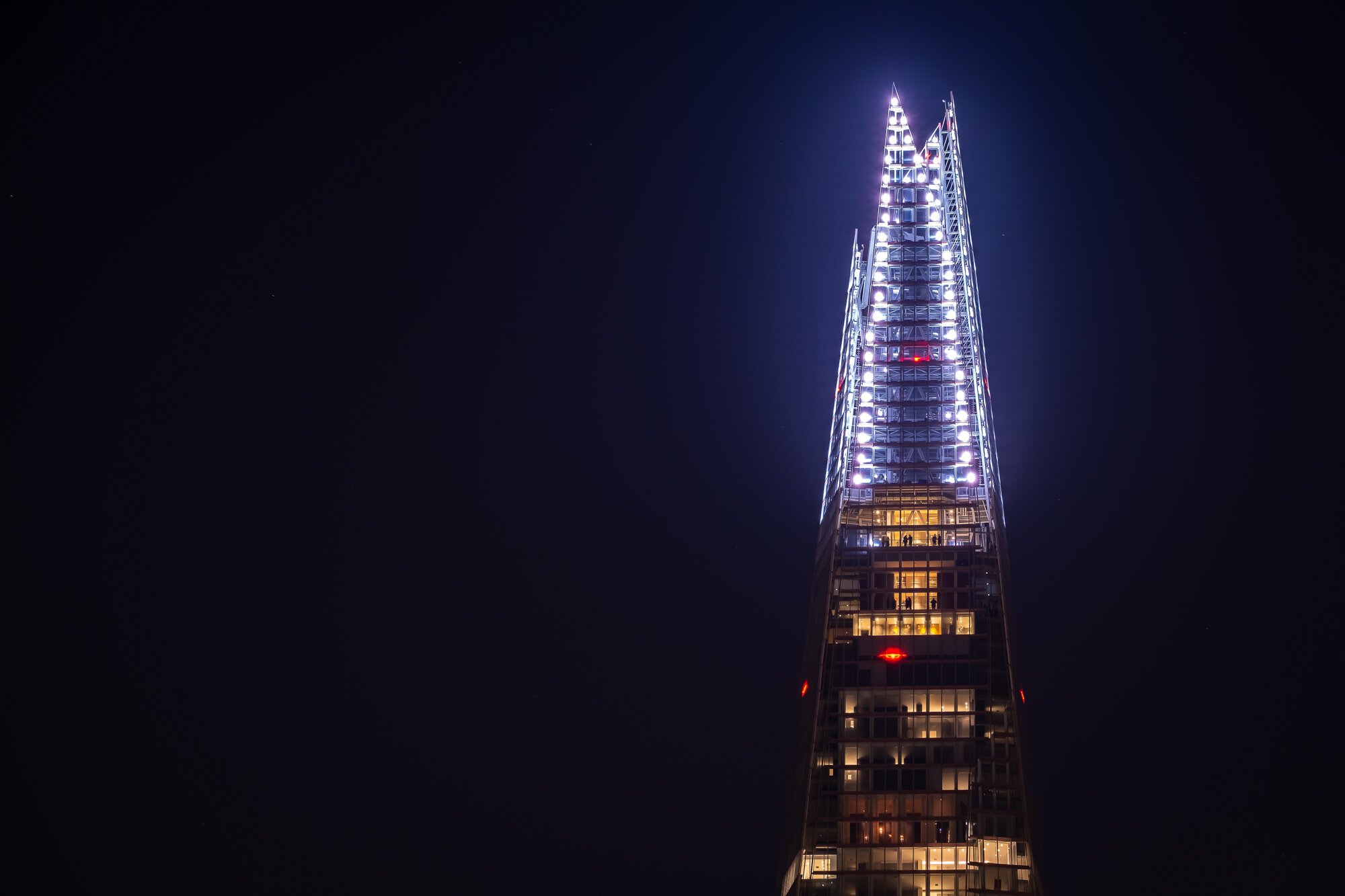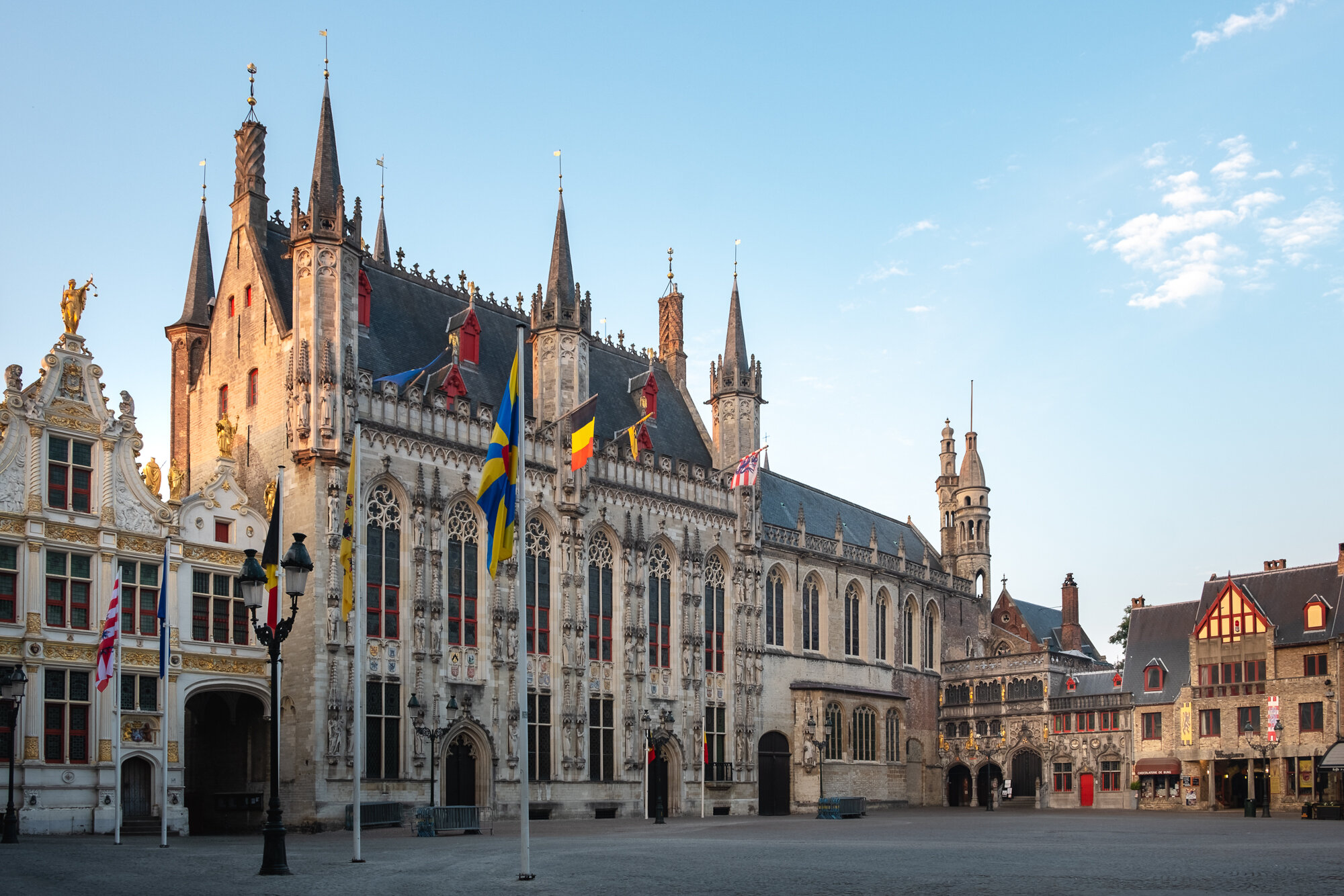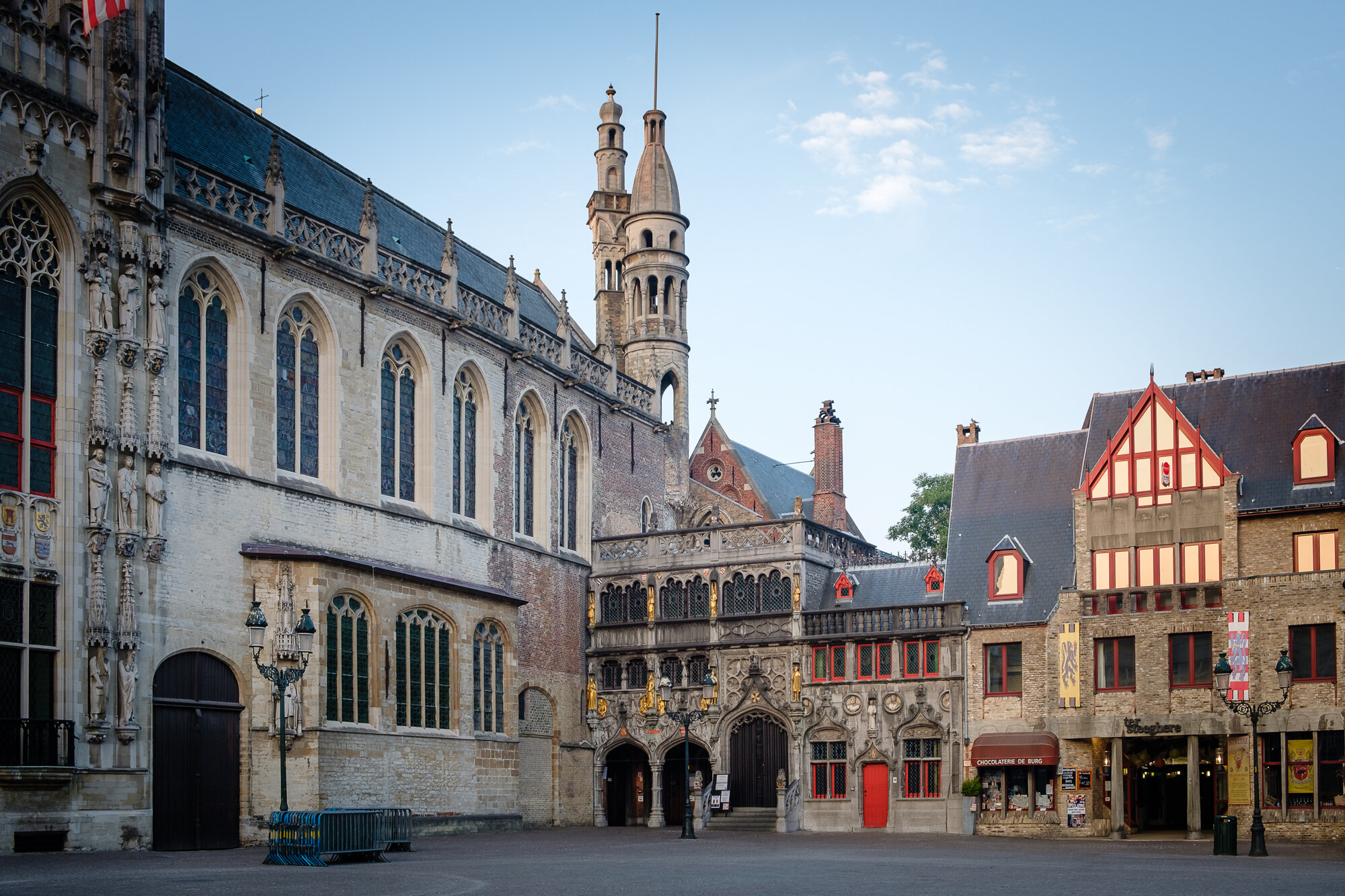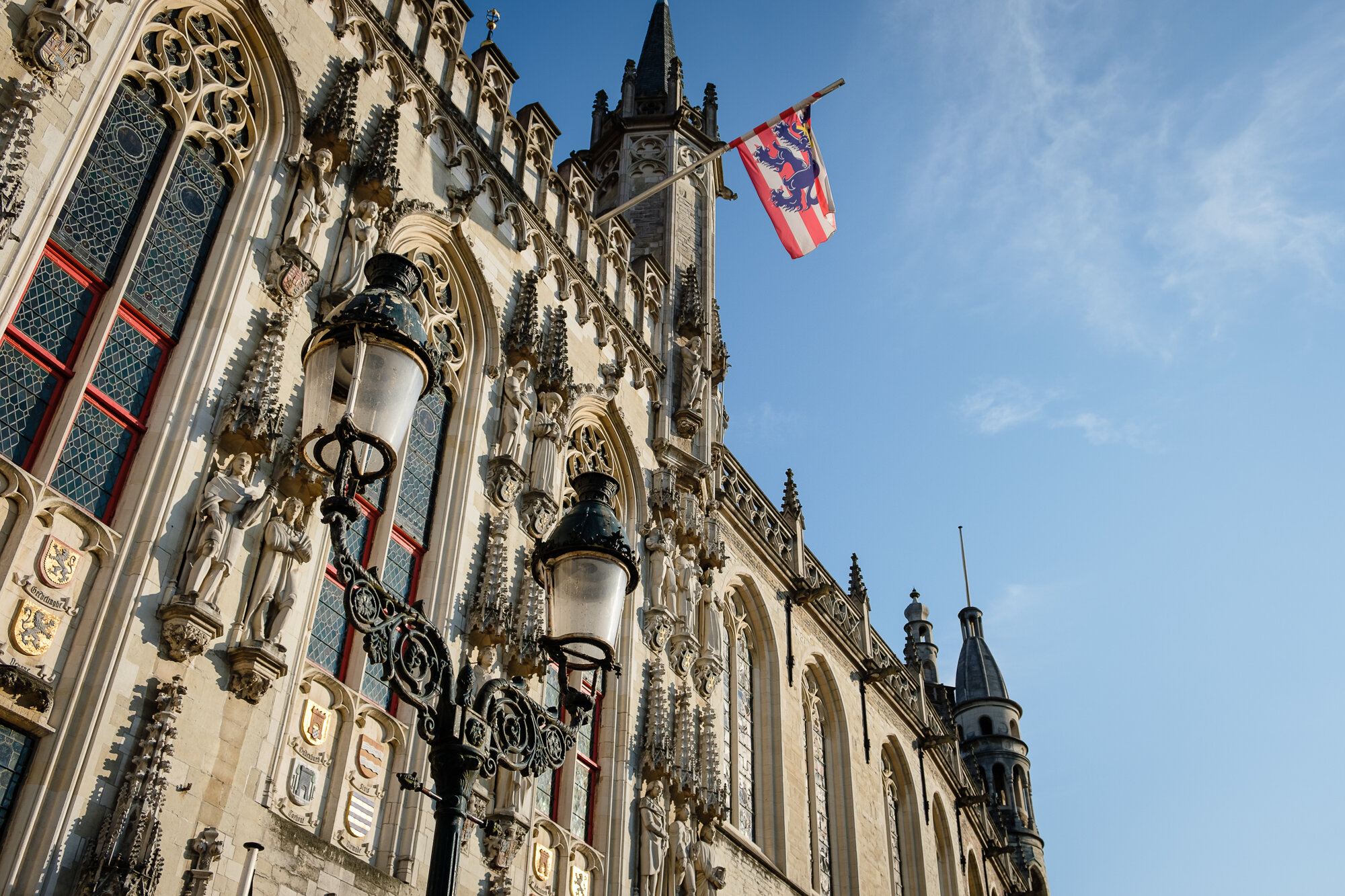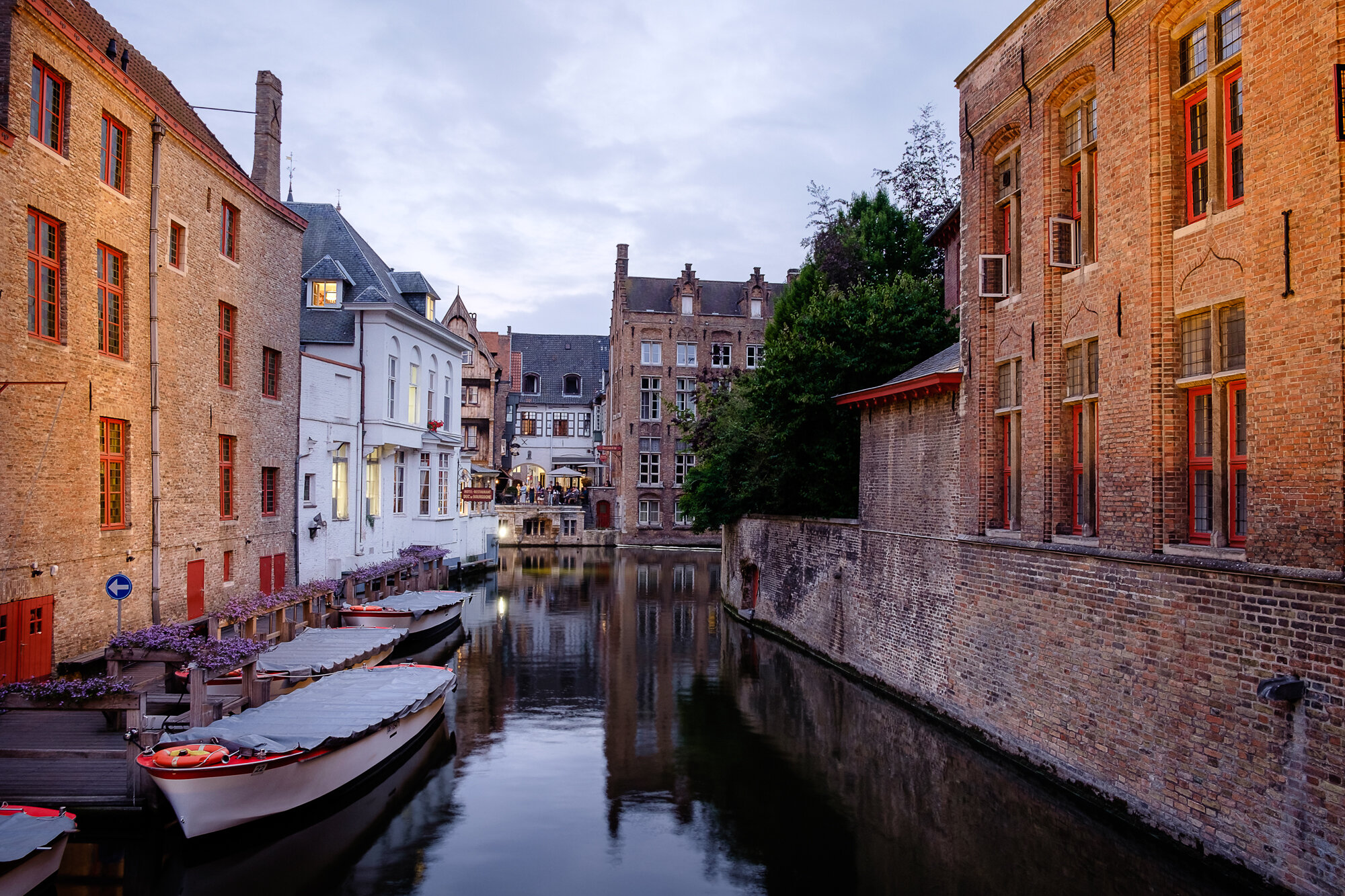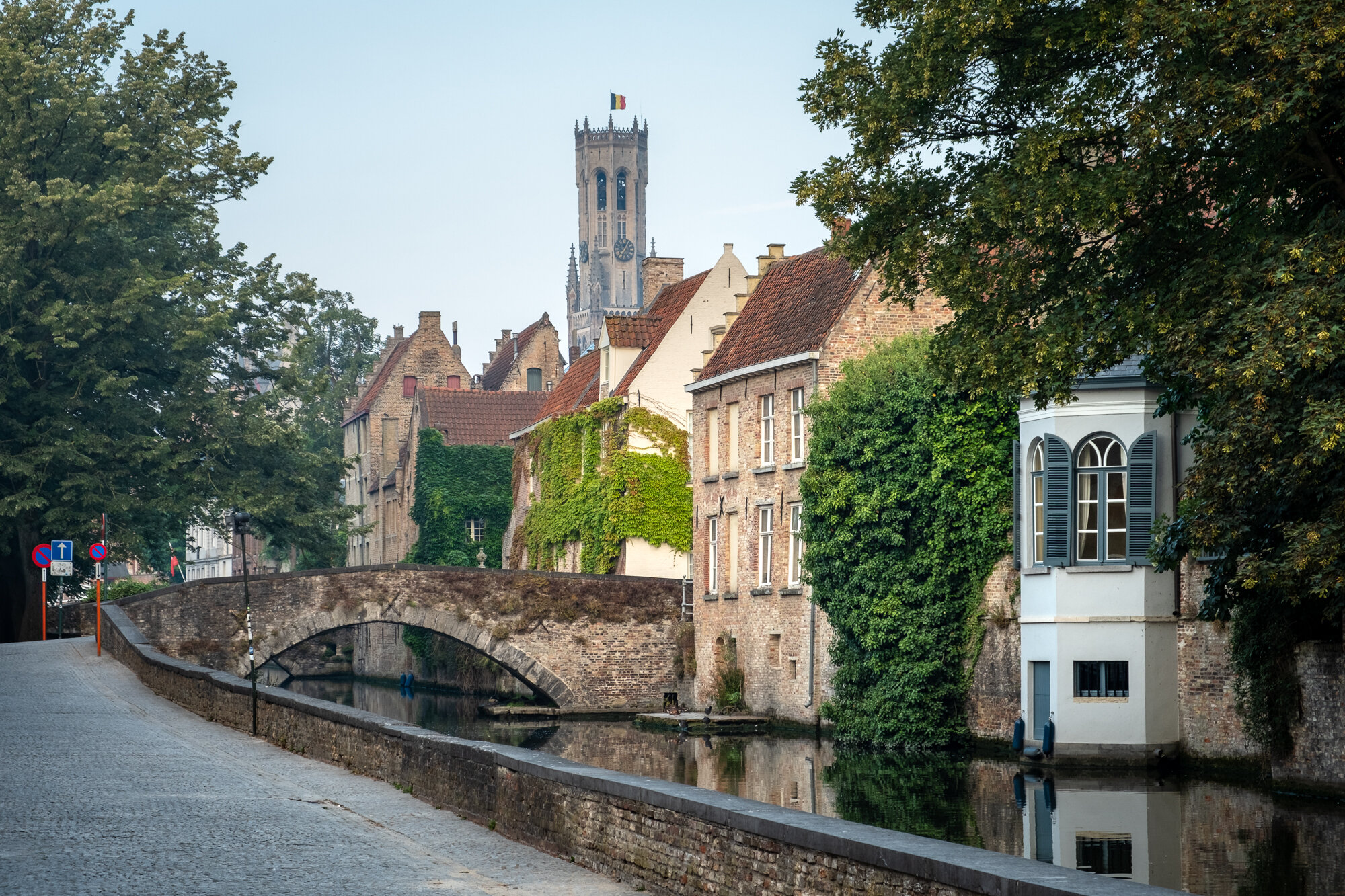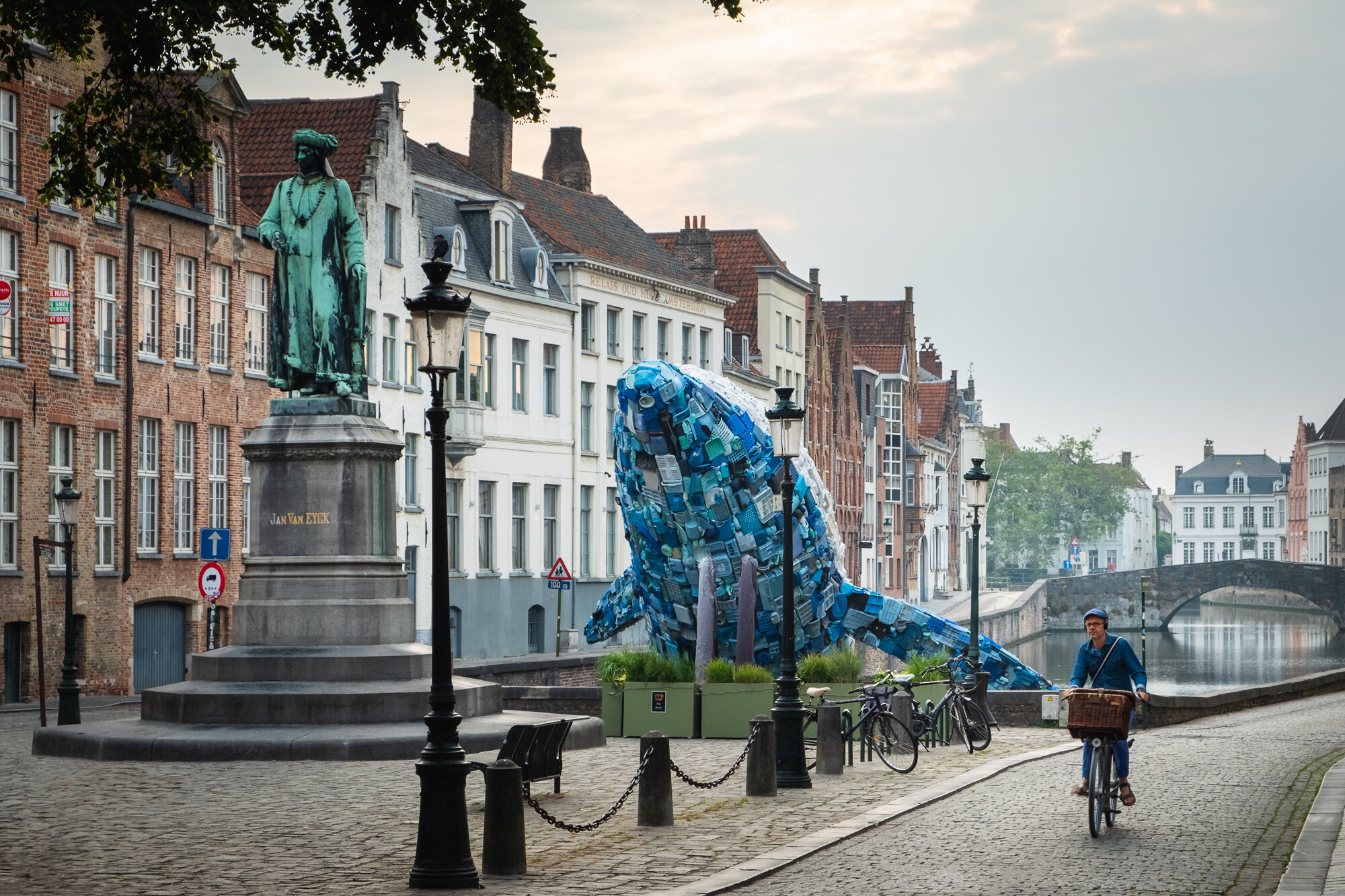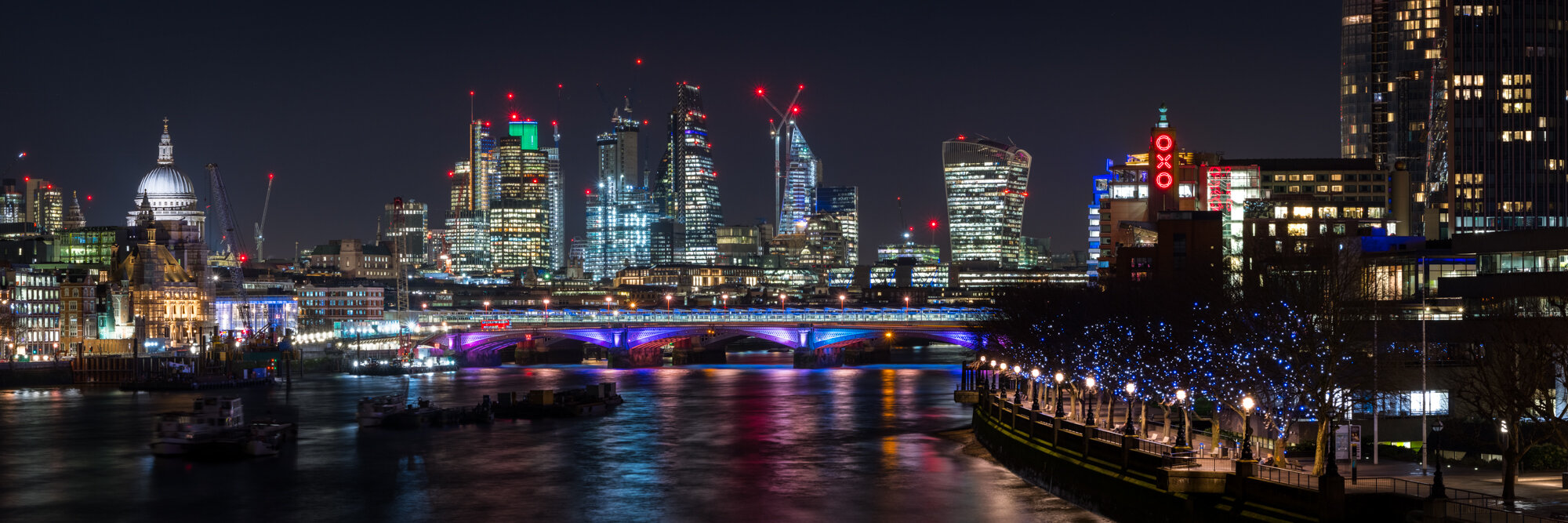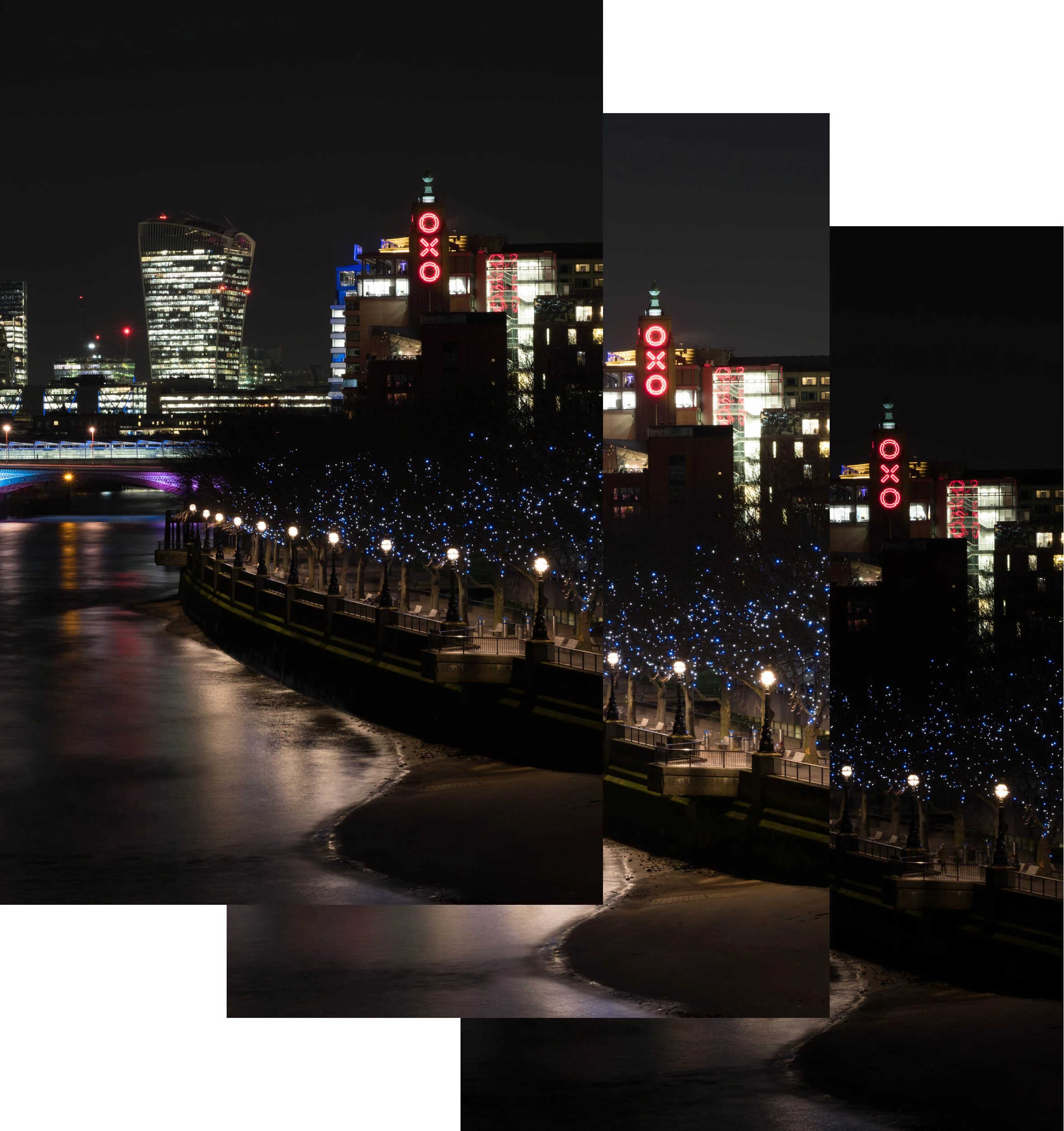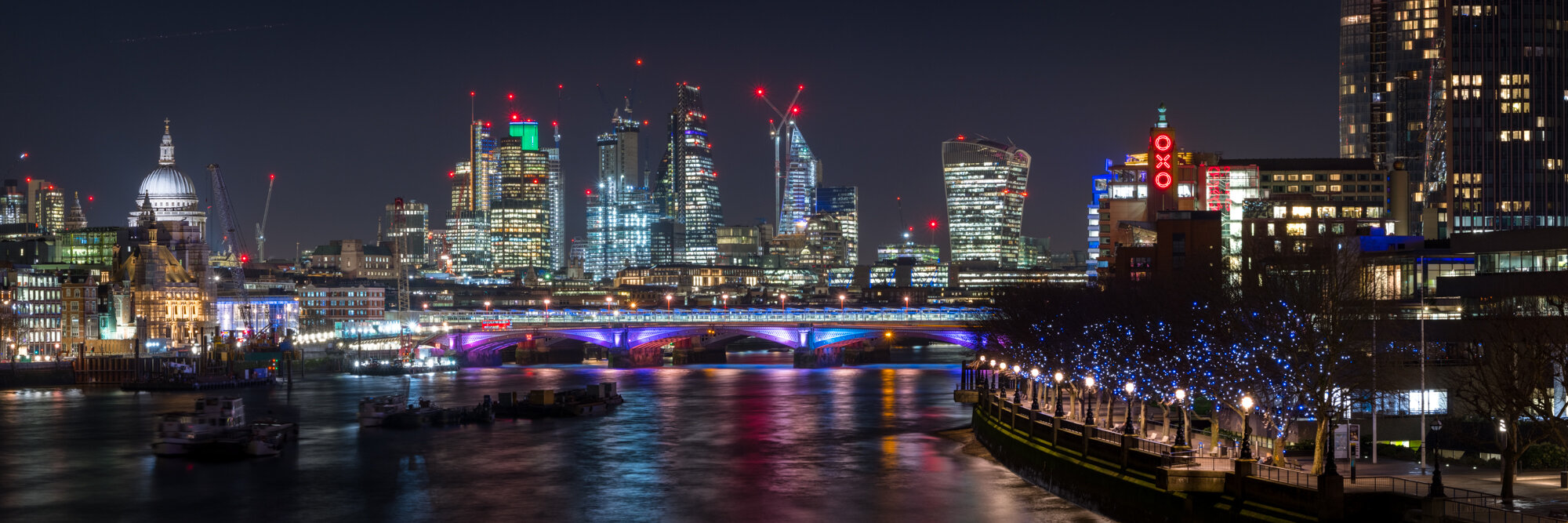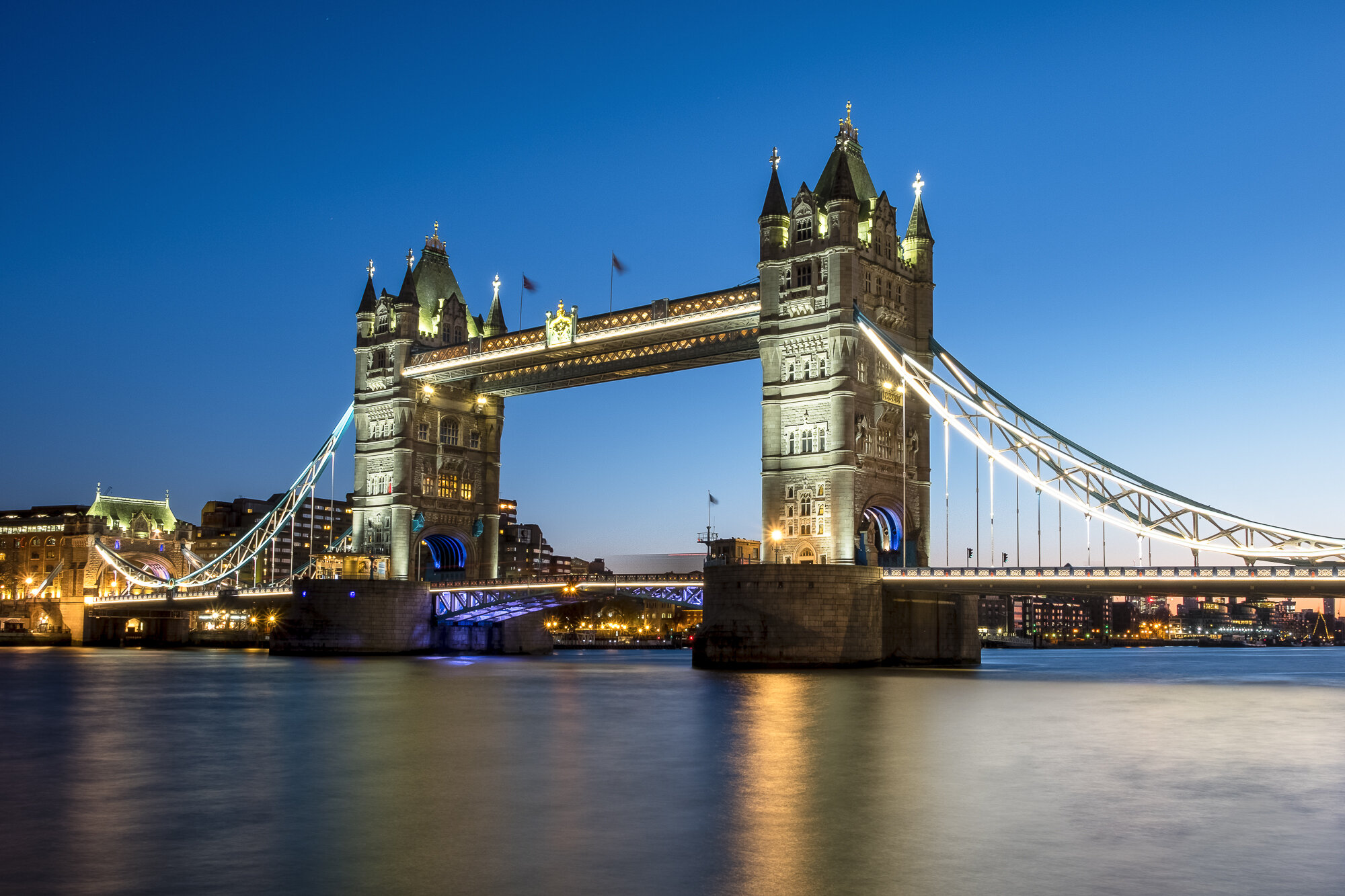BLOG ARCHIVE
My Top Spots To Photograph London at Christmas
London puts on a great show at Christmas and the illuminations can add something very special to the already iconic views. Join me as I show you my top spots for photographing London at Christmas.
Christmas is the one time each year that London gets a whole new look all over the city. Lights and decorations are erected to help everyone get into the festive spirit and for us photographers, this is an ideal time to capture a different looking London, especially at night when the illuminations create some quite dazzling photo opportunities.
I’ve decided to put together a list of some of my favourite places to capture London looking all festive and Christmassy.
1. Leadenhall Market
Leadenhall Market is a hidden gem located in the City of London. Nestled amongst the modern high rise buildings, this charming Grade II listed, 14th century street has been used as filming locations for movies, most notably Harry Potter and the Philosopher’s Stone.
Here at Leadenhall Market, you will find the cobbled streets lined with decorations and a large Christmas Tree where the streets cross.
Link to Leadenhall Market on Google Maps
TIP: If you are looking to get a photo of Leadenhall Market without lots of city workers in the shot, then head to the City on a Sunday morning. There will be far less people about.
2. Shard Lights
Each year, throughout December, The Shard will put on a show with lights and colours shining from its tip. Being that this is the tallest building in the city, it can be seen from almost anywhere but I recommend viewing the light show from across the river on the cobbled walkway directly in front of the Tower of London or from either Tower Bridge or London Bridge.
Link to a great vantage point on Google Maps
TIP: If capturing Christmas lights at night, make sure you have a tripod with you to avoid those blurry photos.
3. Tower of London
The Tower of London is a buzz of activity around Christmas time. Apart from the usual tourists visiting this famous attraction, they also have an ice skating rink in the old moat. Along the Thames path in front of the Tower, you will find trees and decorations such as this one shown below with Tower Bridge creating a fantastic background subject.
Link to The Tower of London on Google Maps
TIP: This path along the river in front of the Tower of London closes at night. Make sure you check the closing times before you head out to capture it.
4. More London Place
More London Place (also known as London Bridge City) is well worth a visit at Christmas. Each year they put up a contemporary Christmas Tree and there is a Christmas Market along the river front where you can grab some food and drink and a gift or two. You can also grab some great views across the river of Tower Bridge, The Tower of London and the skyscrapers in the city.
Link to More London Place on Google Maps
TIP: More London Place can be touchy about photographers using tripods. I tend not to be bothered by security guards if I use my tripod discreetly and keeping out of the way of other people.
5. Covent Garden
Moving west, Covent Garden is a great place to photograph London at Christmas time. Each year you will find a fantastic Christmas Tree and festive decorations around the Market square.
The tree shown here for Christmas 2018 is huge! Look how small the people look down by its base.
I also love the Morris Minor topped with gifts in the image below. Very imaginative and very British!!
Link to Covent Garden on Google Maps
6. Carnaby Street
Carnaby is famous for its Christmas lights. Located just off Regents Street, this place is well worth a visit. In 2018, the theme for the lights were lines from the song Bohemian Rhapsody by Queen. This area is particularly good to visit at Christmas as apart from it being a pretty cool street itself, it is right next to Regent Street, Oxford Street and the world famous Liberty London department store.
Link to Carnaby Street on Google Maps
TIP: The West End will be busy AT ALL TIMES so if you want to try to capture this area with less people, get up early and try to be there before 7am.
7. Knightsbridge/Mayfair
If you fancy a wander, the affluent Mayfair and Knightsbridge areas are great places to photograph London at Christmas. Some of the hotels and shops in this area create some fantastic displays. Below are just a couple of examples but there are many more.
If you have a couple of hours to spare, here are Google Map directions for a great walk from South Kensington to Oxford Street which will pass through Knightsbridge, Mayfair and new Bond Street.
These are just a few of my favourites but London has so many places to visit at Christmas and I know there will be many, many more. Feel free to drop a comment below telling me where your favourite place to visit at Christmas time. It doesn’t even have to be London!
Until next time.
On Location Photographing Bruges
In July 2018, I spent a day and a bit in the beautiful city of Bruges, Belgium. With only around 36 hours in the city, I wanted to soak up as much of this city as possible and photograph some of its stunning views, cityscapes and interesting architecture.
In July 2018, I spent a day and a bit in the beautiful city of Bruges, the largest city in the Flemish region of Belgium. With only around 36 hours in the city, I wanted to soak up as much of this city as possible and photograph some of its stunning views and interesting architecture.
As I had done with my trip to Venice, I want this post to be a good mix of photography and travel related content. This isn’t an all inclusive review of the city as there is so much more to explore and given how close I am in the UK to Bruges, you can bet your bottom dollar I will be heading back in the not so distant future.
See here for my post PHOTOGRAPHING VENICE - PART ONE
Rather than post the photos I took in the order they were taken, I decided to structure this post into the different locations I photographed, some I visited multiple times allowing me to photograph these places at different times of the day.
This post won’t be too gear orientated but below is a quick list of the camera/lenses I had with me:
Fujifilm XT2 and X-T10 cameras
XF10-24mm lens
XF18-55mm lens
XF35mm F2 lens
XF55-200mm lens
Manfrotto travel tripod which I didn’t use too much
Plenty of batteries and memory cards.
As you can see, I am a Fujifilm shooter and during this trip, i tended to carry the smaller XT-10 and a single lens while walking about during the day whereas the XT2 was used, alongside the tripod and other gear while shooting during the best light during the more focused morning and evening shoots. For some more details about the gear I use, pop over to my About page.
Burg Square
I’ve decided to start with Burg Square. Just a short walk from the larger, Market Square, the architecture in Burg square is quite stunning ranging from Gothic to Renaissance and includes some important buildings such as the 14th Century Town Hall, from which the city was governed for over 600 years.
Fujifilm XT2 | XF18-55mm | 18mm | 1/140th Sec | f/7.1 | ISO200
Fujifilm XT2 | XF18-55mm | 25mm | 1/110th Sec | f/7.1 | ISO200
Tucked in the corner of Burg Square is The Basilica of the Holy Blood. This ornate, tiny church has a Romanesque lower chapel and a Gothic upper. Visually, the upper Gothic chapel has it all going on with lots of colour and detail with the lower being a lot more subdue.
In the photo above, next to the Holy Blood, you can see the red door shown in this picture here. I often find myself capturing interesting doors and windows and this one caught my eye with the bright reds and the decorative statues.
Still in Burg Square, the photo below is a closeup shot of the Town Hall. I tried to capture some of the architectural details behind one of the ornate lamp posts in the square.
The red and white flag that flies above the Town Hall is the Flag of Bruges, Province of West Flanders, Belgium.
Fujifilm XT2 | XF18-55mm | 55mm | 1/420th Sec | f/4.5 | ISO200
Fujifilm XT2 | XF18-55mm | 22mm | 1/5,800th Sec | f/4.5 | ISO200
This is Berg Square with the Belfry of Bruges Tower in the background and a hot air balloon up above the city. The horse and carts you can see are a real feature of Bruges and taking a ride in one is a great way to see the city. The one time I needed the wider 10-24mm lens and it was at the hotel. I only just managed to get everything in the shot!
Fujifilm XT2 | XF18-55mm | 18mm | 1/350th Sec | f/5 | ISO200
If you ever visit Bruges and want to photograph the city, try and get out and about at sunrise. As you can see in the photos below, the streets will be deserted. I took these at around 7am on Sunday morning and had the entire place to myself. Bliss!
Fujifilm XT2 | XF18-55mm | 18mm | 1/75th Sec | f/7.1 | ISO200
Fujifilm XT2 | XF18-55mm | 29mm | 1/80th Sec | f/7.1 | ISO200
Palace of the Liberty of Bruges
Located in a corner of Burg Square and smaller in comparison to its neighbouring buildings, the Palace of the Liberty stands out on the square with its decorative, golden trimmed architecture. Built between 1722-1727, this building has been used as a court house and now houses the city archives.
The photo here (below left) is what appears to be the entrance to the Palace but entry is in fact gained via the City Hall mentioned earlier in the post. Although the building looks impressive from the front, I particularly enjoyed photographing it from the back. If you wander down the side of the building, underneath the archway and along Blinde-Ezelstraat you will get a great view of the golden, decorative statues and trim framed by the buildings flanking the street. For this reason it’s a popular photographic composition captured in Bruges.
Fujifilm XT2 | XF18-55mm | 55mm | 1/50th Sec | f/7.1 | ISO200
Fujifilm X-T10 | XF55-200mm | 61mm | 1/900th Sec | f/5 | ISO200
Dijver Canal
There are some great photo opportunities along the very pretty Dijver Canal which is part of the main canal system that runs through the centre of Bruges. For this photo, I stood on the Wollestraat Bridge to capture the canal with the tower belonging to The Church of our Lady in the background. It’s such a beautiful composition but the bevy of swans that swam in to the scene as I was taking the photo finished the shot off nicely. I just couldn’t have timed it better if I tried.
Fujifilm XT2 | XF18-55mm | 26mm | 1/40th Sec | f/7.1 | ISO200
In the photo below, I took a wide angle shot of the Dijver Canal and the Relais Bourgondisch Cruyce (more on that below) and this view shows where this particular stretch of the river starts. I like the composition of this image as its as close to an epic cityscape as I got while in the city the two towers work well to balance the image.
Fujifilm XT2 | XF10-24mm | 10mm | 1 Sec | f/11 | ISO200
Relais Bourgondisch Cruyce
One of the most famous views along the Dijver Canal is where the river zig-zags past the very pretty Relais Bourgondisch Cruyce Hotel. As I mentioned earlier in the post, I got up before sunrise to try to capture the city without the hustle and bustle of my fellow tourists. I think the feeling of calm and tranquility does show in the photo below and the canal being so calm, almost mirror-like provides some fantastic reflections.
Fujifilm XT2 | XF10-24mm | 12mm | 1/10th Sec | f/11 | ISO200
I think the swans like having their photo taken. Here they are again adding some interest into this closeup of the canal.
Fujifilm XT2 | XF18-55mm | 44mm | 1/50th Sec | f/7.1 | ISO200
Here’s one more image from my early morning shoot of this location. Between the tree and the reflections, I they balance the image nicely.
Fujifilm XT2 | XF10-24mm | 15mm | 1/15th Sec | f/11 | ISO200
As I mentioned at the beginning of this post, I have grouped the shots I took by location rather than time and I headed back at this location to try and capture the Relais Bourgondisch Cruyce Hotel at sunset. The sun was still quite high in the sky when I captured the shot below and unfortunately the epic light didn’t arrive and this was the best it got on this particular evening.
Fujifilm X-T10 | XF18-55mm | 23mm | 1/320th Sec | f/5 | ISO200
A different view of the hotel scene is shown below. As soon as the sun goes down, the very warm artificial lights turn on along the canal and gives a very orange glow from the buildings. The architecture can create fantastic lead-in lines and some cracking compositions and in the shot below the boats on the left and building on the right do just that.
Fujifilm X-T10 | XF18-55mm | 18mm | 1/10th Sec | f/4.5 | ISO200
The final image I took at this location was after the sun had set and blue hour had kicked in. I had to tone down the orange lights quite a lot in post processing to balance the exposure a little but now thats done the vibrant blue sky and the orange buildings work really well together in the final image.
Fujifilm X-T10 | XF18-55mm | 18mm | 1.9 Secs | f/10 | ISO800
Belfry of Bruges
Visible from practically anywhere in the city and situated on the market square, this medieval bell tower stands 83m tall and towers over the entire city. You may have already noticed but I took so many photos which featured the Belfry Tower somewhere, in fact it was pretty hard not to.
Fujifilm XT2 | XF18-55mm | 18mm | 1/40th Sec | f/7.1 | ISO200
I took the photo above as I walked away from the canal along Wollestraat. This street had some amazing chocolate shops.
In this particular shop there was so much variety and the staff would be wandering around with different flavoured chocolate tasters. You can buy chocolate by the bar, truffles and you can even buy chocolate tools such as edible screwdrivers and hammers.
As you can see in this picture, these shops made great photographic subjects. Just open up that aperture and fire away.
Fujifilm XT2 | XF18-55mm | 37mm | 1/170th Sec | f/7.1 | ISO200
I took this photo above at around 6am and as you can see, it was calm, clear and ever so slightly hazy. Although the sky lacked drama, it did mean there was nothing to distract from the tower standing proud and unrivalled as the main focal point of the image with the hotel and reflections in the canal forming an attractive foreground.
I mentioned earlier that this city is so charming with it’s mixture of medieval, and gothic/neo-gothic styles, it really is something you would find on a chocolate box but if you follow my usual style of cityscape images, you will see I like a bit of the wow-factor in my compositions and that can mean adding scale using tall buildings and thats why I think, photographically the Belfry of Bruges and the other towers are such an important feature on the city’s skyline as they add impact to the otherwise relatively low city skyline.
Below is another photo of the tower taken along Wollestraat during a midday walk around the city.
Fujifilm XT2 | XF18-55mm | 33mm | 1/7,500th Sec | f/4 | ISO200
GROENEREI
The Groenerei is another stretch of the canal that runs through the city but in contrast to other parts of the river with the strong architectural features flanking the water, this small section looks more like a pretty little town in the country rather than a significant European city.
Fujifilm XT2 | XF18-55mm | 44mm | 1/60th Sec | f/6.4 | ISO200
Although the style of the buildings remains in line with many other buildings in Bruges, the trees, foliage and old bridges along the river change the look significantly providing a wealth of varied photography opportunities.
The photo above is one of my favourite images I took while in the city. It has some nice light, a balanced composition provided by the buildings and trees and some beautiful reflections in the canal.
When trying to capture the essence of a location, some say to start wide (the cityscape) and then gradually get closer, picking out features or the location such as the chocolate shop above and this charming little structure which looks like a mix between a location to moor a boat and a summer house at the end of the garden.
Note to self: Work harder to capture the details when visiting new locations rather than focusing solely on the cityscapes and architecture photos. Maybe a little street photography too.
Below is a photo of the Groenerei looking back up towards the centre of the city. Another image featuring the Belfry Tower.
Fujifilm X-T10 | XF18-55mm | 26mm | 1/140th Sec | f/3.2 | ISO200
Fujifilm XT2 | XF18-55mm | 46mm | 1/110th Sec | f/7.1 | ISO200
JAN VAN EYCKPLEIN
The last stop on this photographic tour of Bruges’ major sites is Jan van Eyckplein (Jan van Eyck Square). Named after the painter himself this pretty cobbled square used to be the main harbour in Bruges.
It was around 7.30 when I took this photo to the right here and the light was a bit flat but I just had to capture this great composition as I walked towards the square. The cobbled street leads the eye tight towards the main focal point of the square which is usually the Poortersloge (The Burghers' Lodge) and it’s slender tower reaching into the sky but while I visited Bruges there was also a temporary art installation of a whale leaping from the water which will likely draw your attention.
The image below is taken a bit further down the canal and has the Poortersloge’s tower situated more centrally with the bridge obscuring the whale sculpture somewhat. This time I used the wall on the left hand side as the lead in line towards the square.
Built in the late 14th and early 15th century the Burghers' Lodge was the place where the "important" citizens (poorters) had their meetings and where they received their trading partners.
Fujifilm XT2 | XF18-55mm | 55mm | 1/240th Sec | f/7.1 | ISO200
Fujifilm XT2 | XF18-55mm | 39mm | 1/170th Sec | f/7.1 | ISO200
Jan van Eyck was a renowned Bruges painter who lived in the 14th and 15th Century. As shown below, he has a statue in the square in his honour. Jan van Eyck was one of the founders of Early Netherlandish painting and one of the most significant representatives of early Northern Renaissance art.
I don’t take many photos with people in it but I liked the traditional look of this chap on the bike and him riding up the cobbled street as i think it adds to the composition and story nicely.
Fujifilm XT2 | XF18-55mm | 44mm | 1/160th Sec | f/8 | ISO200
Skyscraper (the Bruges Whale) is an art installation for the Bruges Triennial which invited globally renowned artists to create artwork based on the changing world and the pressures it puts upon all forms of life. This particular creation was made of 5 tons of plastic waste fished from the Pacific and the Atlantic Oceans to represent the 150 million tons of plastic waste that has been dumped into the world’s oceans. What a fantastic representation of what is a growing global concern.
Although photographically I may have preferred to capture the traditional view of Jan van Eyckplein there is no question this amazing but temporary sculpture added something different to the scene creating its own unique story.
Fujifilm X-T10 | XF35mm F2 | 35mm | 1/4,000th Sec | f/2.5 | ISO200
One of the problems about spending such a short time in any city is that you don’t get a lot of time to explore inside many of these fabulous buildings and basilicas. I mentioned at the beginning of the post that I will likely return to Bruges in the near future where I will try to venture inside the buildings more often and try to capture some some of the close-up details of the architecture around the city.
As ever, I welcome any questions or feedback about this or any of my posts.
Until next time.
How I Printed This Image of The Shard London
I love to see my photos printed but for some, printing at home can be both daunting but equally rewarding. In this blog post I walk you through the simple steps I took when printing my own London cityscape photo of The Shard on Fotospeed’s Metallic Gloss paper using photoshop and my Canon PRO-10S printer.
So, last year I decided to buy my first professional printer in a bid to start printing my own images at home. I was at the UK Photography Show in Birmingham and I brought the Canon PRO-10S. This printer had a show exclusive £150 cash-back on it’s already reasonable purchase price of £500 so in end I paid £350 for it. Bargain!
Although there are cheaper and more convenient ways to get my images printed by using third party printing labs, I wanted to own the entire creation process from capture to edit and then print with the aim to experience more of my work in a tangible print form while careful selecting the paper and styles to get the print exactly how I want the finished article to look.
I’m not going to cover in this post how I originally edited the image I chose to print, nor the process around calibrating screens as this is a topic for another day. In this post I will run through how I prepared the image to print and talk about some of the settings I used along the way. If you want to read a post covering how I edited a print from RAW to finished image, see this blog post:
Editing Sunset at The South Bank
Below is the photo I decided to print. This is a long exposure photo I took of The Shard in London from across the River Thames. This is a great spot to capture an iconic view of London and what’s great about it is that although the vantage point is private property on the grounds of the Tower of London, they don’t have restrictions around the use of tripods which can be an issue elsewhere in London. That being said, the usual rules should still apply when using a tripod in busy areas such as not getting in peoples way and being polite and thoughtful of those around you.
Fujifilm X-T10 | XF10-24mm | 13mm | 100 Secs | f/13 | ISO200
Step 1: Choosing the right Paper
I learned quite quickly that it’s particularly important to ensure the photo matches the paper it is printed on. Some images just won’t look at their best when printed on a high gloss paper and likewise, other images wouldn’t be at their best with a matt finish. For that reason I chose to print this image in particular as with the reflections in the glass and highlights in the clouds and water, it was crying out for a glossy, vibrant finish and I just happened to have recently bought some of Fotospeed’s Metallic Gloss paper to test out. See here for Fotospeed’s own description of this particular paper:
Metallic Gloss 275 is a flat, stiff, middle-weight paper with a metallic effect gloss finish. The paper has a neutral white base and an instant dry, microporous coating. This paper has a wide colour gamut and a high D-MAX which delivers beautiful images, both in colour and B&W.
Step 2: Preparing the Image
Now with paper and image chosen, I went about preparing the image for print in photoshop. Since this image is already processed, I didn’t need to do a lot to it to get it ready but I do think these steps are crucial to ensure the image looks its best in print.
Start with the highest quality image you have: When I edit photos, I always export a gold master copy in TIFF format. TIFF does not compress the image and from this gold master, all copies of the image can be made from a consistent baseline. I will create lower resolution copies for web or like in this instance, edit a copy in readiness for printing.
Brightness and contrast: There is a big difference between how an image is illuminated between on screen display and print. On the screen, the image will be back-lit and appear brighter whereas on print, the image is illuminated via reflective light so it will react to the environment. If the room is dark, the print will be dark. As such, I always increase brightness and add a little contrast to my images before printing. For this image I increased brightness by 20% and contrast by 10%. As always, watch those highlights and shadows by using the histogram and make use of a layer mask to mask out the effect where needed.
Resize the image: I always resize my images at this stage to ensure the image is at the right size to print to prevent resizing taking place at the print stage. I will use the Image->Image Size option in the menu and use the appropriate recommended settings to ensure the image is the exact dimensions I want to print the image. I used the following settings (also see image above):
Width = 11 inches (to print on A4 paper with a small border)
Lock aspect ration to auto adjust the hight
300 pixels per inch for print resolution quality
Reduction option to preserve sharpness on the resample option
Sharpen the image: I always sharpen my images a little when I print. In Photoshop, I create duplicate layer of the image, and I use the High Pass filter (Filter->Other->High Pass) add a 1-2 pixels to taste being careful to not to add too much to keep the image looking at its best. In this image, I added 1.5 pixels. Next, to allow the base layer to show through, change the blending mode to Overlay on the layer with the High Pass filter applied.
Vibrance and Saturation: The last thing I do before I print is add a little more vibrance and saturation as I notice on colour prints, I can lose a little bit of the punch in the image so I like to add this back a little. With another Adjustment Layer, I added 15% Vibrance and only 5% saturation. Be very careful not to overdo these effects but they need to be adjusted based on the image being printed.
That’s it, the image has been prepared for print. See below for a before and after image. As you can see the effect is noticeable but not extreme and will ensure the image looks fantastic when printed.
Step 3: Printing the image
So, now it’s finally time to get the ink to paper!
Before I printed my image, I made sure that I downloaded and installed the correct printer/paper profile from Fotospeed’s website. This is important to ensure the print, paper and ink all match which goes a long way to ensuring the colours render correctly when the image is printed.
So, still within photoshop and once the print dialog box was open, I chose the following settings:
Selected the correct printer
Ensured Photoshop was handling the colour
Chose the correct printer profile mentioned previously.
Centred the image on the paper to make an even boarder
So off the printer went and out came my image. The image to the right was taken as soon as the printing had finished.
Tip: Leave the print at least a few hours before handling to ensure the ink fully dries. The tones may also change a little too so don’t inspect the finished print until it has had tome to dry.
So there you have it….
Below is the final print in all it’s glory. Although this photo doesn’t do it justice as it looks a little too blue/purple, it looks fantastic in person and much more alike to the image at the top of this post.
It was far from a comprehensive overview of the printing process but to some it is quite daunting to try and this post shows that it can be done well with minimal steps.
Feel free to add any of your own tips to simplifying the print process in the comments below.
Until next time.
How I Created This Epic London Panoramic
Do you want to know how I created this epic panoramic of London’s skyline? In this article, I walk you through the capturing and post-processing steps I used to create the final image.
At the beginning of 2018, I ventured out into a clear, cold London to capture a new panoramic of the ever-changing skyline. Although cold, the conditions were great as the night was clear and city lights were lighting up the scene nicely.
In my bag, I had my Fujifilm XT2 and three lenses. The XF10-24mm, XF18-55mm and the XF55-200mm. For this shoot, I used the XF55-200mm with the XT2 and you will read why shortly.
Fujifilm XT2 | XF55-200mm | 82mm | 6-30 Secs (bracket) | f/14 | ISO200
On Location, capturing the photos
So, let's start with the obvious question. Why take a panoramic image when even a standard 18-55mm lens would capture the entire scene in one shot?
Well, it will vary scene to scene but one of the characteristics of using a wider focal length is it tends to push the background further away, de-emphasising it from the composition somewhat. This is really not what I wanted for the final image as the tall buildings in the background are an important part of the image and need to remain prominent so I needed to use a telephoto lens to bring the background closer. So, on this occasion, I had already prepared to use a longer focal length and take multiple images from left to right.
This panoramic of London was taken from Waterloo Bridge. I like this composition as it has recognisable structures such as the dome of St Pauls, the Oxo Tower to the right and the many new modern buildings in the background. I also particularly like the way the lights on the Southbank sweep into the frame leading the eye towards the city skyline.
Due to the dynamic range within the scene with deep black shadows and bright lights, I also decided to bracket each photo by 1 stop of exposure.
On went the 55-200mm lens and with my XT2 mounted in portrait mode I panned from left to right, ensuring I overlapped by 50% or more to help the stitching later. The focal length used was 82mm at f14 with each bracketed exposure ranging from 6 to 30 seconds each. I also carefully checked each image to ensure it was sharp and once I was happy I had the sots in the bag, off I went to catch the train home.
Back home, combining the bracketed images
Now back home, I loaded the RAW files into Lightroom and proceeded to merge each bracketed shot resulting in an image with lots of dynamic range to play with. To do this in Lightroom, select Photo - Photo Merge - HDR. I was then left with just 7 HDR images.
Now, a quick note about HDR. Although some like it and others don't, done correctly HDR can be a valuable tool in the post-processing workflow. As long as the effect is not overdone, using HDR subtly can help create some fantastic images.
Once I had the 7 images (in DNG format), I gave them all a star rating and filtered my view by that star. It's a neat way to declutter your workspace as it leaves you just the images you want to work with.
Creating the panorama
Next, with the 7 DNG files ready, I then proceeded to merge the images into a panorama. To do this, I selected all 7 files then chose
Photo - Photo Merge - Panorama.
I selected the Spherical projection and let Lightroom do its thing. As you can see, by taking the images in portrait mode, it has allowed for extra height for when some inevitable cropping is needed. However straight you set your camera up on the tripod, there is always some cropping required. Below is the merged, cropped image ready for some post-processing.
Post Processing
Next, I commenced my usual Lightroom workflow, working down the different sliders enhancing the image. Here are the settings I used:
As you can see, it didn't take a huge amount to create the image here. I cooled off the white balance, toned down the highlights, then gave the image a bit of vibrancy to bring out the colours in the city lights. After adjusting the curves and adding a small vignette and I was done. Below is how it looked after this stage of the process.
The final step in the process was to export the image into Adobe Photoshop. Here I performed the following:
Cloned out a few light trails left by the lights of a plane
Added a bit more contrast using levels and curves
Used the high pass filter on a new layer to add just the right amount of sharpening
(I rarely add sharpening in Lightroom)
And that's it! The final image is below (select the image for larger version)
Fujifilm XT2 | XF55-200mm | 82mm | 6-30 Secs (bracket) | f/14 | ISO200
With the resulting image being over 62 megapixels, it can be difficult to demonstrate just how much quality and detail there is so be sure to check out the video below to better show off this final panoramic photo.
And there you have it, the full end to end process I followed to create this striking panorama of London's vibrant skyline. If you have any questions for me about this or any other image I have created then please get in touch by emailing me at photo@trevorsherwin.co.uk or using my contact page here.
On Location Photographing London Day and Night
I recently spent a rare full day in London capturing sunrise at Tower Bridge and sunset over at Canary Wharf. This post covers the shots I took ending with a time-lapse video taken throughout the day.
Regular readers of my blog will know that I often spend time in London taking photos but usually just a few hours at a time and normally before or after my day job and it is a lot less often I decide to spend an entire day dedicated to wandering around, photographing the city so I decided to get out for the day and see what I could capture.
I started the day capturing Tower Bridge at sunrise then over to Canary Wharf at sunset while in between I captured some images for a time-lapse compilation which you can see at the end of this post.
The first shot below is a photo of Tower Bridge during the Blue Hour which is the time between night and sunrise. If you look to the bottom right-hand side of the shot you can just see the first hints of sunrise just underneath the bridge.
Fujifilm XT2 | XF18-55mm | 18mm | 1.7 Secs | f/13 | ISO200
Looking east along the River Thames, the photo below captures St Katherine's docks with the towering buildings of Canary Wharf in the background. More shots of those later.
Fujifilm XT2 | XF18-55mm | 55mm | 0.6 Secs | f/13 | ISO200
Now on the other side of the river, this shot of the "Girl with a Dolphin" fountain in front of Tower Bridge is a pretty popular composition but I really like the timing here with the ambient light complimented by the artificial lights from the lamps and Tower Bridge. You can also see The Shard in the background.
Fujifilm XT2 | XF18-55mm | 18mm | 0.9 Secs | f/13 | ISO200
Moving further away from Tower Bridge, below is a photo of the sundial at St Katherine's Docks. Although I would prefer more interest in the sky, the good thing about a cloudless sky is you often get to see the subtle pastel pinks and reds above the horizon just before the sun rises. It is rather beautiful and adds a touch of simplicity to the image.
Fujifilm XT2 | XF18-55mm | 19mm | 1/8th Sec | f/13 | ISO200
At this point I wanted to try a composition I have already captured at sunset further east along St Katherines Docks but it turns out the gates to that stretch of the waterfront is closed at this time (so much for planning ahead, right?) so with the best light about to appear I had to think fast so I rushed back and captured the photo below with the warm glow from the sun lighting up Tower Bridge.
Fujifilm XT2 | XF18-55mm | 18mm | 1/17th Sec | f/11 | ISO200
My last photo of the morning was from the other side of Tower Bridge, capturing the shot below of the sunburst underneath the bridge.
Fujifilm XT2 | XF18-55mm | 18mm | 1/100th Sec | f/20 | ISO200
So, that was the morning shoot. As mentioned before, I continued throughout the day to capture a few time-lapse sequences but luckily with the shorter winter days, there's not a long time to wait before the light starts to improve again as the sun starts to lower before sunset.
I captured the photo below of the Royal Naval College in Greenwich from across the river. With the longer exposure, I smoothed out the river, removing any distractions and keeping this symmetrical scene as simple as possible.
Fujifilm XT2 | XF18-55mm | 36mm | 30 Secs | f/9 | ISO200
My last image of the day was taken from just in front of the Millennium Dome which provides fantastic views of the skyscrapers of Canary Wharf on the Isle of Dogs. With the colours evolving in the sky as the sun was setting and the long exposure blending the changing light, I really like the tones in this final image.
Fujifilm XT2 | XF18-55mm | 29mm | 345 Secs | f/9 | ISO200
I am still learning loads about time-lapse videos and have not created as many as I had hoped so far but below is the result of a day of capturing multiple smaller time-lapses and editing them all together to create the video below.
My Top 6 Photos of Venice
A few months ago I took a trip to Venice and while most of the trip I took handheld photos, I did have the opportunity to grab some sunrise long exposures and capture some of my favourite photos of this unique city.
A few months ago, I spent some time in the wonderful city of Venice and absolutely loved it.
I have visited quite a few cities such as Paris, New York, Valencia, Barcelona and of course London but Venice is like nothing I have experienced before. From the many canals breaking the city lots of smaller islands to the ornate very typically Venetian architecture this place has a unique atmosphere full of culture, art and history.
One thing any person visiting the island in the summer months will notice is the number of people. During my visit, it was packed full of tourists from about 9am as they all arrived in their droves from the many boats that bring them in. I can't complain though, as I was one of them but it was for this reason I decided to approach my photography a bit differently from my normal approach while in a city. For each day I was there I took just one camera and lens out with me as I knew I would be blocking pathways and just getting in other people's way if I tried using my tripod through the narrow streets and canal paths.
I am so glad I made this decision as I came home with a collection of images that I was really happy with and not in keeping with my usual style. I took so many photos during my visit and covered so much ground so I wrote a two-part blog post documenting my visit below.
As I have already covered my visit in detail within the above posts, I won't repeat myself here but if you are interested in finding out a little more about the images I took, grab a coffee and give the above posts a read.
So, all that being said, I am still a fine art, landscape photographer and I'm not happy unless I have the camera mounted on the tripod, methodically dialing in my camera settings and fitting my filters to capture a carefully composed image. I decided to venture out before sunrise one morning to capture the city as it sleeps. As an urban landscape photographer, whatever city you happen to be in, there is no better time to capture it than at sunrise. This is the time where you can have the place to yourself and capture the landscape in a way it is not normally experienced by most other people so below are my favourite shots from my early morning shoot in this magical city.
If there was one shot I just had to capture during my stay it was this composition below looking down the Grand Canal towards the Basilica di Santa Maria della Salute in the distance. The light wasn't as epic as I hoped but if I was going to capture a long exposure, this had to be it.
What I really like about this image is I had one chance to capture it while there was some light in the sky. The eight-minute exposure makes the water almost mirror like with a touch of etherealism and the resulting image is a clean crisp shot ensuring the sweeping curve of the water leads the eye to the main focus being the architecture and Basilica.
Fujifilm X-T10 | XF18-55mm | 18mm | 480 Secs | f/8 | ISO200
Now, I know the composition below is similar to the above but I had to include it in the post too. I really like the atmosphere in this shot. It suits the location and represents the feeling I had while I traveled around the city. You see, a photo does not have to be technically perfect for it to be a favorite. It just has to be an image that evokes a personal and emotional bond with the viewer. Well, this shot does that for me.
Fujifilm X-T10 | XF18-55mm | 37mm | 0.5 Secs | f/11 | ISO200
Here's a little lesson for any landscape photographer. Always look behind you! While still on the Accademia Bridge and as I had just taken the image above and I looked behind me and the view up the Grand Canal was beautifully lit with the sun lighting up the clouds with this fantastic magenta. I was not expecting to capture another composition from this bridge so I was really happy with that!
Fujifilm X-T10 | XF18-55mm | 18mm | 0.7 Secs | f/11 | ISO200
Although on its own, this is a nice shot of the entrance to St Mark's Square from the river with Doge's Palace to the right of the shot, what I like most about the image is the Lion of Venice standing to attention on top of the pillar appearing to welcome the sunrise as it just hits the top. I'm not sure if the statue is deliberately placed in that location and that height but I like to think that this was more about fortuitous timing and witnessing a moment not many will.
Fujifilm X-T10 | XF18-55mm | 34mm | 6 Secs | f/8 | ISO200
Next up is a photo of the Bridge of Sighs. Again, if you wanted to know more about this location, check part 2 of the blog via the links above. There are a lot of ornate, architectural details in the buildings in Venice and it should stand out and be prominent which is why I decided to take another long exposure to smooth out the water and any distractions. That coupled with the central composition and lines leading in from the edges of the image results in a more striking image of this beautiful bridge.
Fujifilm X-T10 | XF18-55mm | 24mm | 4 Secs | f/10 | ISO200
Last but not least is one of the more popular compositions of the Venice Gondolas. This one took a bit of work to get the composition right as the water level was high and spilling over to the walkway and the boats were moving up and down, left to right in the water but I got there in the end. I had to use the ND Grad filter for this shot to capture the motion of the boats with a longer exposure and I am really pleased how this turned out with the central composition and the prominent wooden poles adding contrast and texture to the image.
Fujifilm X-T10 | XF10-24mm | 17mm | 14 Secs | f/7.1 | ISO200
On Location taking Long Exposures at The Shard
A few weeks ago, I headed out to one of my favourite photography locations in London to capture a few shots of The Shard and City Hall at sunset. This has proved to be a location that has left me wanting time and time again. Can I get the shot this time?
A few weeks ago, during a cold winter's evening, I headed out to one of my favourite photography locations in London to capture a few shots of The Shard and City Hall with my newly acquired Fuji XT2 camera. I've never really been much of a kit guy. I like to have the right tools to use but I was a little excited to see how this new camera would perform.
I parked myself across the river from The Shard, in front of the Tower of London. I love this area, especially as it is a private path but they still allow tripods which isn't that common in the Big Smoke these days. As you can see in the map below, this spot is perfect as you get great compositions of the cityscape across the river and of Tower Bridge too.
So, although this is a popular place to shoot the London cityscape, it is one of the hardest to get right in my opinion. The best light would normally hit the buildings in the summer months as in the winter the sun drops down behind the buildings which is nice but with all of that glass on show, it really comes alive when the sun is setting off to the right of the scene casting the light across the image from right to left. On top of this, the light's dynamic range is through the roof making it really difficult to avoid creating a silhouette of the buildings. I didn't bracket these shots hoping that the camera will capture this dynamic range allowing me to pull the details from the shadows and rescue the sky. It did not disappoint.
Fujifilm XT2 | XF18-55mm | 18mm | 1/75th Sec | f/22 | ISO200
Although the light was good on this particular evening, the weather was not playing ball. Here in this image, you can see my Fuji XT2 camera poised to capture this iconic view and there are hardly any clouds in the sky.
Before heading out, I had checked the weather and all was looking good for the right amount of cloud cover and the direction of the wind was supposed to mean the clouds would be traveling away from me but alas, the cloud cover was lighter than expected and the wind direction wasn't quite right. If the clouds were moving towards or away from me, they would create great lead in lines and make fantastic compositional elements in the image.
Nevertheless, the golden rule with landscape photography is that you never know what might change and it's not over until it's over. As the sun dipped below the horizon, a few more clouds turned up and the sunlit those up nicely so on went the 10 stop ND filter and off I went capturing the shot below.
What I think works about the image below is that the long exposure has captured and elongated the clouds making them a little more prominent in the shot with the warm light emphasising them even further.
Fujifilm XT2 | XF18-55mm | 18mm | 43 Secs | f/10 | ISO200
To try to demonstrate how much better the clouds look when moving towards or away from you when taking long exposure images, I took changed direction and took the image below of Tower Bridge. Again, the cloud cover was not perfect, but you can still see how the direction the clouds are moving is important and how it can change the entire look of the image.
Fujifilm XT2 | XF18-55mm | 18mm | 60 Secs | f/10 | ISO200
My last shot in this particular spot was back looking across at the Shard as the last of the sun's warm light was in the sky. Again, cloud cover was lacking but with the light levels dropping I was able to take an even longer exposure of 120 seconds with some darker reds in the sky resulting in a totally different looking shot than before. This is another important lesson about photography and that is the light is everything and compositions that have been shot a thousand times before will take on their own unique look and feel as the light changes. No two images are ever the same.
If like me, you like a cleaner, more minimal shot of London, long exposures can really help simplify the scene. The boat traffic on this stretch of the Thames is particularly busy and this technique helps remove these distracting elements.
I covered this topic a bit more in my post titled Slowing Time: Why the Long Exposure?
Fujifilm XT2 | XF18-55mm | 18mm | 120 Secs | f/10 | ISO200
Heading back for the day (as the cold had got the better of me) I snapped this pleasing composition of Tower Bridge. I had seen an image like this before so by no means an original composition (if such a thing exists for London cityscape photography) but with the lights providing my lead-in line to the Tower Bridge itself, it came out pretty good.
Fujifilm XT2 | XF18-55mm | 55mm | 6.5 Secs | f/11 | ISO200
I think my first outing into London with the Fuji X-T2 was a successful one. It performed well and was, like others before great to use with all the tactile dials and knobs quickly accessible rather than having to hunt around the menu system to make changes during the shoot. I still think the composition of the Shard and City Hall has more to offer and I will no doubt be back again at some point to try to capture it again. But for now, I am really pleased with the images I came home with on this particular day in London.
My Favourite Images of 2017
It’s important to review your work regularly. In this article I review some of my favourite landscape and cityscape images I took in 2017.
Time seems to speed up every year and 2017 was no exception. It went so quickly. With busy schedules and so many distractions, I find I am always looking forward and spending less and less time looking back and reflecting.
I sometimes look back at older images but only briefly and rarely have time to contemplate them in context of my photographic journey and how my style, abilities and equipment has progressed and impacted my more recent work. From this point forward, I plan to review my images more regularly and below are some of my favourite images of 2017.
Fujifilm X-T10 | XF18-55mm | 18mm | 28 Secs | f/9 | ISO200
I have to start with a few of my favourite images of London. I like working with long exposures in London as visually, there is so much going on and removing some of this noise from the scene helps simply the landscape and provides a more pleasing composition.
Although classic views of London, I have applied my own style and individuality to these images and with London captured by so many people, this is in itself a challenging task to accomplish.
Fujifilm X-T10 | XF18-55mm | 23mm | 58 Secs | f/11 | ISO200
Read more about when I took the photo above: On Location from Tate Modern to Waterloo.
Fujifilm X-T10 | XF18-55mm | 21mm | 1/3rd Sec | f/10 | ISO400
The next three images are my favourite images from my local area. 2017 was an important year in this regard as I decided to properly explore other photographic subjects and focus my effort on finding and shooting local landscapes. I really like the simple composition and vibrant colours in the image below.
Fujifilm X-T10 | XF10-24mm | 15mm | 30 Secs | f/16 | ISO200
The next two images are especially important as not only are they two of my favourite landscape shots but they are close to where I grew up and where I used to hang out when I was young. Capturing a sunburst isn't particularly easy and I'm so pleased how the shot below turned out.
Fujifilm XT2 | XF18-55mm | 25mm | 1/20th Sec | f/14 | ISO200
Fujifilm XT2 | XF18-55mm | 23mm | 1/25th Sec | f/9 | ISO200
The next two shots were captured on a trip to Venice in July and I like them both a lot. The classic view of the Grand Canal and Basilica di Santa Maria della Salute is one I am particularly proud of as I wanted to capture an extra long exposure and the resulting shot was 8 minutes long and with the best light lasting only a few minutes, I only had enough time for one shot. Thankfully it worked out fine.
Fujifilm X-T10 | XF18-55mm | 37mm | 0.7 Secs | f/9 | ISO200
Fujifilm X-T10 | XF18-55mm | 18mm | 480 Secs | f/8 | ISO200
I plan to review my images more regularly so look out for future photo reviews.






